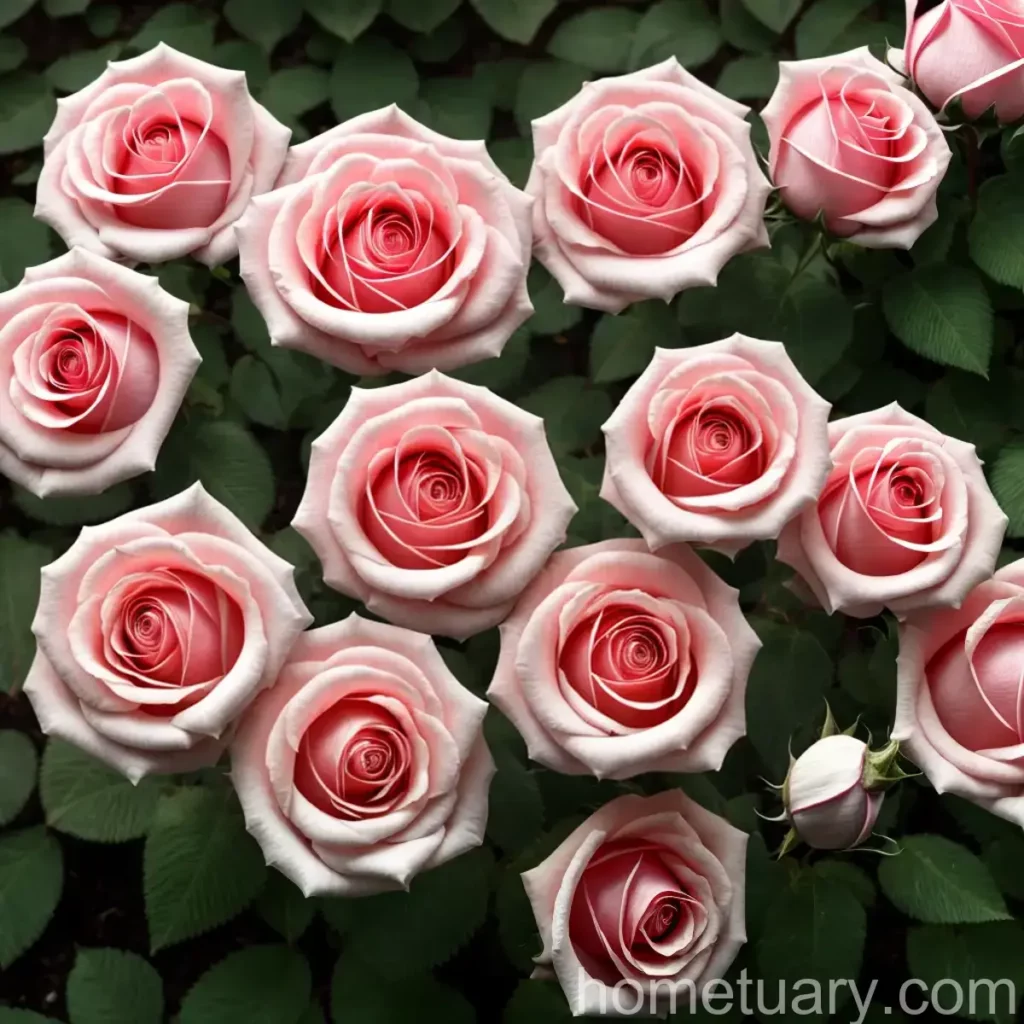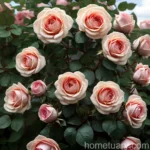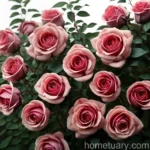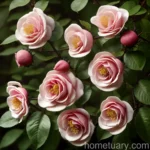The Fascinating World of Kordesii Rose (Rosa DORTMUND)
Welcome to the world of the vibrant and enchanting Kordesii rose, scientifically known as Rosa Dortmund. In this blog post, we are going to delve into the care, cultivation, and characteristics of this beautiful plant. From its planting requirements to its growth stages and diseases, we will explore all aspects of cultivating and enjoying the mesmerizing beauty of the Kordesii rose.
What is Kordesii Rose (Rosa DORTMUND)?
The Kordesii rose, also known as Rosa Dortmund, is a vigorous and disease-resistant hybrid rose that has captured the hearts of gardening enthusiasts around the world. This stunning rose is a part of the Kordesii group of roses, which are renowned for their exceptional hardiness and stunning blooms. The Rosa Dortmund variety is celebrated for its deep red blooms and its robust nature, making it a prized addition to gardens, landscapes, and even containers.
Key Takeaways – Kordesii Rose (Rosa DORTMUND)
Before we dive into the specifics of caring for the Kordesii rose, let’s take a quick look at the key takeaways for this remarkable plant:
- Plant Name: Kordesii Rose (Rosa DORTMUND)
- Type: Hybrid Rose
- Key Features: Vigorous growth, disease resistance, deep red blooms
- Cultivation: Can be grown in gardens, landscapes, and containers
- Special Characteristics: Hardy, vibrant blooms, low maintenance
- Uses: Ornamental purposes, landscaping, cut flowers
- Fragrance: Delicate, sweet scent
- Companion Plants: Various flowering perennials, ornamental grasses
With these key takeaways in mind, let us explore the intricate details of cultivating and caring for the captivating Kordesii rose.
Culture
The culture of the Kordesii rose encompasses various aspects of its care and maintenance, including watering, sunlight exposure, soil preferences, and more. Understanding the cultural requirements of the Rosa Dortmund variety is essential for ensuring its healthy growth and prolific blooming.
Uses
The Kordesii rose serves multiple purposes in the realm of horticulture and landscaping. Some of its primary uses include:
- Ornamental Purposes: The vibrant and striking blooms of the Rosa Dortmund make it a popular choice for ornamental gardening and landscaping.
- Cut Flowers: The deep red flowers of the Kordesii rose are often used in floral arrangements and bouquets due to their rich color and delicate fragrance.
- Landscaping: This rose variety is often used in landscape design to add color and visual interest to gardens and outdoor spaces.
Water
Proper watering is crucial for the health and vitality of the Kordesii rose. Consider the following watering guidelines for optimal care:
- Regular Watering: The Rosa Dortmund thrives with regular, deep watering to ensure that the roots receive adequate moisture.
- Avoid Waterlogging: While the plant appreciates consistent moisture, it is important to avoid waterlogging the soil, which can lead to root rot and other issues.
Sunlight
Sunlight plays a pivotal role in the growth and flowering of the Kordesii rose. Understanding its sunlight requirements is essential for successful cultivation:
- Full Sun: The Rosa Dortmund thrives in full sunlight and should receive at least 6-8 hours of direct sun exposure daily for optimal growth and blooming.
- Partial Shade: While it prefers full sun, the plant can tolerate some degree of dappled or partial shade, especially in hot climates.
Fertilizer
Fertilizing the Kordesii rose is essential for providing it with the necessary nutrients for robust growth and abundant flowering:
- Balanced Fertilizer: Use a balanced, slow-release fertilizer formulated for roses to provide essential nutrients without promoting excessive foliage growth.
- Spring Feeding: Apply fertilizer in the early spring as new growth begins, and consider supplementing with additional feedings during the growing season for container-grown specimens.
Soil
The soil composition significantly impacts the health and vigor of the Rosa Dortmund, making it crucial to understand its soil preferences:
- Well-Draining Soil: The Kordesii rose thrives in well-draining, fertile soil that allows excess water to escape, preventing waterlogged conditions.
- pH Level: Aim for a slightly acidic to neutral soil pH, ideally in the range of 6.0-6.5, to promote nutrient uptake and overall plant health.
Pruning
Pruning is an essential aspect of caring for the Kordesii rose, contributing to its shape, flowering, and overall vitality:
- Spring Pruning: Perform light pruning in early spring to remove dead, damaged, or crossing branches and encourage new growth and flowering.
- Deadheading: Regularly deadhead spent blooms to promote continuous flowering and prevent the formation of seed pods.
Propagation
Propagating the Kordesii rose allows for the expansion of its presence in gardens and landscapes, offering an opportunity to create new plants:
- Softwood Cuttings: Propagate the Rosa Dortmund through softwood cuttings taken in the early summer, using rooting hormone to encourage successful root development.
- Division: Divide mature plants in the early spring to create new specimens, ensuring that each division has sufficient root mass and healthy growth points.
Container Popularity
The Kordesii rose’s adaptability to container cultivation makes it a popular choice for individuals with limited garden space or those looking to elevate their patios, balconies, or outdoor living areas with its stunning beauty:
- Container Size: Select a container that provides ample space for the plant’s root system to grow and develop, ideally a 15-20 gallon container for mature specimens.
- Well-Draining Soil: Use a high-quality potting mix that offers excellent drainage and aeration, preventing waterlogging in the container.
Common Diseases
Like all plants, the Kordesii rose is susceptible to certain diseases that can impact its health and vigor. Understanding these potential issues is crucial for proactive management:
- Black Spot: A common fungal disease that presents as dark spots on the leaves, leading to defoliation and reduced vigor.
- Powdery Mildew: A fungal infection characterized by a white, powdery coating on the leaves, often caused by poor air circulation and high humidity.
- Rust: Another fungal disease that manifests as orange-brown pustules on the undersides of the leaves, potentially leading to premature leaf drop.
Disease Diagnosis
Identifying and diagnosing diseases in the Kordesii rose is essential for implementing targeted treatment and prevention strategies:
- Visual Symptoms: Carefully inspect the plant for any signs of discoloration, spots, or unusual growth on the leaves, stems, or flowers.
- Professional Consultation: If uncertain about a specific disease or its treatment, consult with a plant health specialist or extension service for accurate diagnosis and management guidance.
Common Pests
Pests can pose a threat to the health and beauty of the Kordesii rose, necessitating vigilance and proactive pest management:
- Aphids: Small, sap-sucking insects that can cause distortion of new growth and the secretion of honeydew, leading to sooty mold development.
- Japanese Beetles: These voracious beetles feast on rose foliage and flowers, causing significant damage if left unchecked.
- Thrips: Tiny insects that can cause silvery stippling on the leaves and flower petals, affecting the plant’s overall aesthetic appeal.
Botanist’s Tips
As a plant scientist, I offer the following tips to enhance the cultivation and enjoyment of the Kordesii rose:
- Regular Monitoring: Consistently monitor the plant for signs of stress, disease, or pest infestations, addressing any issues promptly to maintain its health and beauty.
- Integrated Pest Management: Implement an integrated approach that combines cultural, mechanical, and biological control methods to manage pests while minimizing chemical inputs.
- Mulching: Apply a layer of organic mulch around the base of the plant to conserve moisture, suppress weeds, and gradually enrich the soil as it decomposes.
Fun Facts
Delving into the world of the Kordesii rose wouldn’t be complete without a few intriguing and delightful fun facts:
- The Rosa Dortmund is named after the city of Dortmund in Germany, where it was bred by renowned rose breeders.
- Some varieties of the Kordesii rose exhibit exceptional disease resistance, making them low-maintenance additions to gardens and landscapes.
- The captivating fragrance of the Rosa Dortmund’s blooms invites pollinators and adds an enchanting element to outdoor spaces.
Links to External Resources
For further exploration and detailed information on the Kordesii rose, consider the following external resources:
- American Rose Society: A leading organization dedicated to the promotion and enjoyment of roses, offering valuable insights into rose cultivation, care, and varieties.
- RHS Rose Directory: The Royal Horticultural Society’s comprehensive rose directory provides in-depth profiles of various rose varieties, including valuable details on cultivation and characteristics.
- University Extension Services: Many university extension services offer practical guides on growing roses, including valuable tips specific to different rose varieties.
As we conclude this exploration of the Kordesii rose, it is evident that this captivating plant offers both visual and olfactory delights, making it a prized addition to gardens, landscapes, and containers. By understanding and fulfilling its cultural requirements, we can savor the vibrant blooms and robust growth of the Rosa Dortmund, creating picturesque outdoor spaces filled with its timeless elegance.















